What Does the P0172 Code Mean?
Diagnostic trouble code (DTC) P0172 stands for “Fuel System Too Rich (Bank 1)”. Your car’s computer will set the code when it determines that there’s too much fuel (or too little oxygen) in the engine’s air-fuel mixture.
NOTE: The oxygen sensor couldn’t care less about unburned fuel in the exhaust stream–the sensor is designed to sense oxygen, not fuel. So, whenever any cylinder misfires due to spark or compression, there will be unburned fuel in the exhaust stream and the oxygen that didn’t unite with that fuel both passing the O2 sensor–but all the sensor will see is the oxygen.
To learn more about air-fuel mixture and how it can cause codes like P0172 to be stored, read our in-depth explanation here.

P0172 on Some Chevrolet Vehicles
The engine control module (ECM) controls a Closed Loop air/fuel metering system in order to provide the best possible combination of driveability, fuel economy, and emission control. The ECM monitors the heated oxygen sensor (HO2S) signal voltage, and adjusts the fuel delivery based on the signal voltage while in Closed Loop. A change made to the fuel delivery changes the long and short term fuel trim values.
Code P0172 may appear on some Chevy vehicles. On a 2016 Chevrolet Equinox L 2.4L L4, for example, this DTC is set if the average long term fuel trim weighted average value is greater or less than a calibrated value.
To learn more about long and short term fuel trim, read our detailed explanation here.
What Does “Bank 1” Mean in P0172?
The “Bank 1” portion of this code indicates that the problem is concentrated on the side of the engine that includes the #1 cylinder. Since inline four cylinders only have one bank, the one bank they do have is considered bank 1. But inline six cylinder engines may have two banks (3 cylinders per bank) even though the engine is an inline configuration.
What are the Possible Causes of the P0172 Code?
Like any other OBD-II code, a P0172 can be caused by a variety of problems. In other words, there is no easy way to pinpoint what’s causing the problem other than examining the critical parts responsible for maintaining the right fuel mixture.
Here are the different possible reasons why you’re getting the engine code P0172:
- Contaminated engine oil (too long since the last oil change)
- A leaking fuel injector
- Excessive fuel pressure due to restriction along the fuel return line or a faulty fuel pressure regulator
- A saturated carbon canister due to packing the fuel tank.
- Clogged air filter
- Restrictions somewhere in the air intake system
- Clogging due to buildup or physical damage in these exhaust components: catalytic converter, exhaust pipe, and muffler
- Faulty O2 sensor (but O2 sensors more commonly fail by reading lean, not rich).
- Exhaust leak (upstream of the O2 sensor, a leak will allow oxygen to enter the exhaust stream, and this will typically throw the opposite code rather than a P0172)
- Problems with other sensors (e.g., coolant temperature sensor, mass airflow sensor)
- Circuit issues, such as loose connections and damaged wiring
- Issues with the PCM, such as software in need of an update

What are the Common Symptoms of the P0172 Code?
A rich fuel mixture can cause your engine to consume more fuel. Because of the extraordinary measures the ECM/PCM can employ to keep the fuel system balanced, you may not notice any symptoms at all other than an illuminated Check Engine (MIL) light. In extreme cases where some other component has failed, symptoms can range from mild to engine-damaging.
Your exhaust system is also at risk as unburnt fuel reaching the exhaust lines can combust and damage parts like the catalytic converter.
To avoid this kind of headache, look out for these symptoms:
- Illuminated check engine light
- Lack of engine power
- Rough or rolling idle
- Hesitation on acceleration
- Misfiring
- Strong fuel odor from the exhaust or inside the cabin
- Poor fuel economy
How to Diagnose the P0172 Code
As outlined above, there are many potential causes for the OBD-II code P0172. Therefore, diagnosing the exact issue that is triggering the trouble code can be difficult.
For an idea of how to troubleshoot the code, check out the video below:
How to Fix the P0172 Code
Disclaimer: Due to the wide variability in vehicle makes and models, as well as other factors, the following information must not be construed as complete or the only definitive way to address a particular issue. Instead, the following content merely attempts to give you a better idea of what a do-it-yourself approach to the issue might involve. You are encouraged to find more technical resources regarding the subject or take your vehicle to a professional technician for the best results.
Fixing the P0172 code can be quite tricky. There are a number of failed components that can cause this error code, so diagnosing the root cause of the issue isn’t easy. If you’d like to save time and effort, you can opt to take your ride to an auto repair shop for proper inspection.
However, if you’re a DIYer who’s up for the challenge, here is some helpful information about how to diagnose and fix this error code.
Check for Other DTCs
Retrieving other trouble codes can help you identify the root cause of the problem. For example, if you’ve retrieved other trouble codes related to oxygen sensors, then you might want to inspect these sensors first for faults before proceeding with other components.
Check the Condition of Your Mass Airflow Sensor
It’s also important to check your MAF sensor. If the sensor is reading higher airflow than is accurate, it can make the engine run rich, which will also drive the fuel trims into negative territory on that bank.
Inspect your Exhaust System
Also, look for leaks in your exhaust system upstream of the suspect O2 sensor. Extra oxygen can cause the O2 sensor to read lean, resulting in a rich condition such as code P0172 indicates.
Monitor Fuel Pressure
A bad fuel injector or fuel pressure regulator can cause high fuel pressure but this will show up on both banks if there is a bank 2. You can check fuel pressure using a mechanical fuel pressure gauge.
Here’s an article that discusses the steps on how to check your vehicle’s fuel pressure.
Replacing Faulty Components
Once you’ve already diagnosed the issue, it’s important to replace the faulty component right away to clear the trouble code. Don’t put off replacing faulty parts because it can just lead to more complicated repairs in the future.
If you continue to ignore this trouble code, your engine’s health can suffer. This issue can affect your spark plugs, pistons, and catalytic converter.
An In-Depth Look at Air-Fuel Mixture and How It Could Cause an OBD Code to Be Stored
Ideally, combustion engines should burn a fuel mixture of 14.7:1. This means there should be 14.7 parts air and 1 part fuel in the mixture by weight, not volume. An engine basically uses about 9000 gallons of air for each gallon of fuel. Engineers always measure fuel by weight. Injectors are rated by how many pounds (grams, kilograms, etc.) of fuel per hour they can deliver at a given pulse width.
If the air/fuel ratio is balanced at 14.7:1, the engine is burning as clean as possible, meaning that every hydrocarbon molecule gets “married” to two oxygen molecules. This process forms CO2, which feeds the grass beside the road; think about it – plants need CO2. CO2 is far heavier than air and hugs the ground. And again, the trees and flowers need it to survive.

When this “marriage” in the combustion chamber between HC and oxygen happens (triggered by the ignition spark), heat is produced very suddenly so that the inert nitrogen (which is 78% of the total air charge) expands, and the piston is driven down to power the crankshaft.
If the air/fuel ratio isn’t balanced and there is too much fuel, each hydrocarbon molecule may only get “married” to one oxygen molecule, forming CO, which is poison. Too much fuel and not enough air is considered rich – too much air and not enough fuel is considered lean. The P0172 code indicates that the ECM/PCM is or has detected a rich condition.
If the air/fuel ratio isn’t balanced and there is too much fuel, each hydrocarbon molecule may only get “married” to one oxygen molecule, forming CO, which is poison. Too much fuel and not enough air is considered rich – too much air and not enough fuel is considered lean.
–Richard McCuistian, ASE Certified Master Automobile Technician
The ECM/PCM and the O2 sensor are all about keeping things balanced in the combustion chamber. If the mixture drifts too far out of balance, a code is stored.
If the air-fuel mix is far enough out of balance, the small amount of oxygen will be used up and there will be lots of HC, which is unburned fuel that makes sooty deposits on the spark plugs.
Can Downstream Oxygen Sensors Be Used to Calculate Air-Fuel Ratio?
The computer determines the air-fuel ratio by monitoring the upstream oxygen sensor/s but if the ECM/PCM determines that the upstream oxygen sensors have become untrustworthy the downstream sensors behind the front catalytic converter will be used for air/fuel ratio calculations. Many mechanics don’t know this and may not even believe it, so be aware of that.

What is Fuel Trim?
Fuel Trim is the ECM/PCM response to the oxygen sensors when the system is in what is called “Closed Loop” fuel control, meaning it is using O2 sensor input as a factor in performing constant Fuel Trim adjustments. The fuel control system drops into “Open Loop” at Wide Open throttle, and starts out in Open Loop with a cold engine or if the ECM/PCM detects a serious malfunction in some other part of the system.
To begin with, there is “Short Fuel trim and there is Long Fuel Trim. Fuel Trim is the ECM/PCM’s fuel mixture adjustment indicator that is visible on a scan tool live data feed. O2 sensor signals can be measured with a scope or a digital voltmeter, but Fuel Trim cannot be measured in any other way except by way live data on a scan tool. Fuel Trim is the ECM/PCM’s programmed response to perceived rich or lean conditions as reported by the Oxygen Sensor(s).
About Long Term and Short Term Fuel Trim
Short term and long term fuel trim are usually displayed as a percentage; the scale is laid out like a number line, with zero in the middle, positive numbers on the right, and negative numbers on the left.
The O2 sensor switches rapidly from rich to lean when things are working right, with 0.5 volts being the center of the voltage swing. And as the O2 sensor swings, so does the fuel trim.

When you have the scan tool display a histogram of the Short Term Fuel trim just above the O2 sensor trace for comparison, you’ll notice that the short fuel trim looks like a “saw tooth” pattern and the O2 pattern looks like “camel humps;” on a healthy system, the O2 sensor will switch 2 to 5 times per second, usually more at higher rpm.
As the O2 is going up, the fuel trim is going down – when the O2 pattern changes direction, so does the Fuel Trim, which is always moving opposite the direction the O2 signal is going. Again, the fuel trim is responding to O2 sensor input and activity, which is an after-the-fact indicator of combustion.
If the O2 swings high (rich) and stays there, the fuel trim will respond by beginning to correct to the negative side of zero and continue to correct until the O2 sensor indicates that the negative correction has returned the O2 sensor to normal activity. The ECM/PCM will set the P0172 code in this case. In extreme circumstances you may see fuel trim at -30%. The ECM/PCM performs fuel trim Correction by modifying injector pulse.
Here’s a Tip When Diagnosing P0172
Long term fuel trim is a coarse adjustment factor that will slowly ratchet in the same direction as short fuel trim until short fuel trim returns to the zero range.
Thus, when you go looking for the cause of a P0172, if you’re using a scan tool that shows live data, check long fuel trim first, because it’s an indicator of where the short fuel trim went as soon as the problem occurred.
If you think you have repaired whatever was causing the problem, remove the battery cable to clear the adaptive (fuel trim) memory so that it all starts back at zero – as soon as the scan tool screen indicates “Closed Loop,” the short fuel trim should remain near zero – if it begins to depart from the zero range as soon as the ECM/PCM enters Closed Loop Fuel Control, you still have a problem.
Any fuel trim values beyond 10 or negative 10 means there’s a problem. The farther beyond 10 in either direction, the bigger the problem. When the LTFT drops between negative 20 and 25 (this varies slightly from one manufacturer to another), code P0172 and/or P0175 will likely be set.
Products Mentioned in this Guide
Any information provided on this Website is for informational purposes only and is not intended to replace consultation with a professional mechanic. The accuracy and timeliness of the information may change from the time of publication.



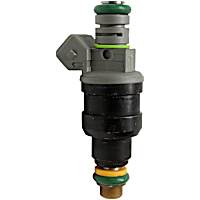 Fuel Injector
Fuel Injector
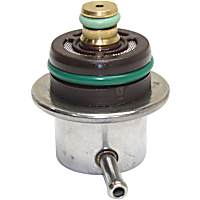 Fuel Pressure Regulator
Fuel Pressure Regulator
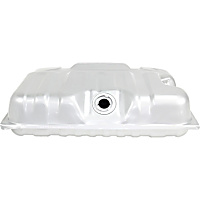 Fuel Tank
Fuel Tank
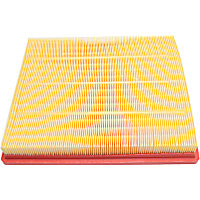 Air Filter
Air Filter
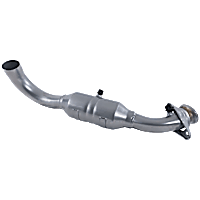 Catalytic Converter
Catalytic Converter
 Exhaust Pipe
Exhaust Pipe

















My wifes Mini gets a P0172 when the fuel injectors are dirty. A bit of injector cleaner in the tank and 50 miles or so and the MIL goes off.
As I push to start my 2020 Sonata all my dashboard like blink on and off.
Hi Reese,
All of the dashboard warning lights should come on momentarily (as part of a system self-test) when you start your car, then extinguish. Is that what you’re experiencing? If so, that’s normal operation.
My check engine light went on and after checking with my scanner, I saw P0172 and P0175 ( both banks running rich. I added Seafoam to a new full tank and the light went off. After running the tank down, and refilling it, the codes returned. Adding a fuel injector cleaner cleared the codes again. Any thoughts on this?
Hi Mark,
What is the year, make, and model of your car?
Hi, it is a 2011 Chevy Equinox V6 and 113k miles.
A couple of common problem areas that can lead to those codes on your vehicle include the high-pressure fuel pump and the fuel pressure sensor. Of course, we recommend getting a professional, in-person assessment for a definitive answer.
Hi
Opel astra j 2013
No warning light, the car move slowly and havey.
fault code p0172 fuel trim too rich +
Fault code p1101 intake air folw system
What can i do?
Hello,
Since we don’t have the Opel Astra in the United States, we can’t look up the details regarding P1101, which is a manufacturer-specific code. We recommend getting a professional, in-person diagnosis for a definitive answer.
Good day
I have a 2015 2.4L Equinox with codes P0172 AND P0191.
I already changed the high pressure fuel pump, the air filter, the spark plugs (I put them from the manufacturer AcDelco) but I still can’t fix the codes. Additionally, every time I delete the codes, p0172 appears after a while, but p0191 appears days later.
Hello,
Have you looked into the fuel pressure sensor and its circuit?
Good day
I checked it and aesthetically I know it looks good, but even so I already ordered a new one from Acdelco to change it, it is not very expensive and I hope it solves my problem since it uses a lot of gasoline
Good day
I changed the fuel pressure sensor and even so the p0172 code was not eliminated, it still spends a lot of gasoline on me and leaves a lot of smell when parking it
Greetings and I would like to receive your support